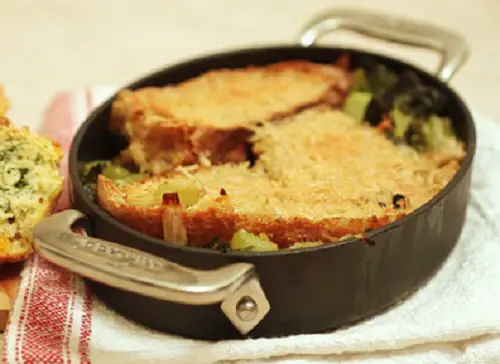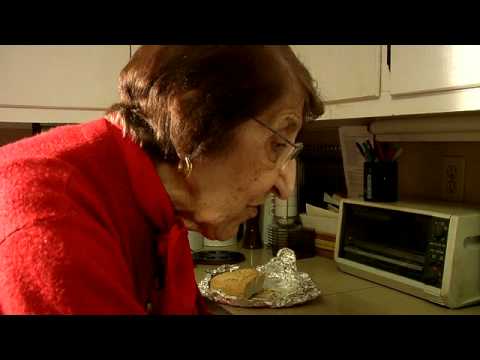Great Depression Cooking – Pane cotto w/ Clara Cannucciari
Great Depression Cooking
Pane cotto
Clara Cannucciari

Pane cotto, or cooked bread as it literally translates, is one of my favorite meals that my mother makes. Traditionally prepared with escarole, stale Italian bread, white beans and sometimes sausage, it came together quickly and fed child me happily for dinner, and often for lunch the next day.
In case you have never seen Clara Cannucciari she at the time of this video was 93 years old. Her recipes touch on the foods that her mother served the family back in the 1929 Great Depression to survive. She is gone now but her videos live on. They are priceless.

A little history on the Great Depression
The Great Depression was a severe worldwide economic depression that took place mostly during the 1930s, beginning in the United States. The timing of the Great Depression varied across nations; in most countries it started in 1929 and lasted until the late-1930s. It was the longest, deepest, and most widespread depression of the 20th century. In the 21st century, the Great Depression is commonly used as an example of how intensely the world’s economy can decline.

The Great Depression started in the United States after a major fall in stock prices that began around September 4, 1929, and became worldwide news with the stock market crash of October 29, 1929 (known as Black Tuesday). Between 1929 and 1932, worldwide gross domestic product (GDP) fell by an estimated 15%. By comparison, worldwide GDP fell by less than 1% from 2008 to 2009 during the Great Recession. Some economies started to recover by the mid-1930s. However, in many countries the negative effects of the Great Depression lasted until the beginning of World War II.

The Great Depression had devastating effects in countries both rich and poor. Personal income, tax revenue, profits and prices dropped, while international trade plunged by more than 50%. Unemployment in the U.S. rose to 25% and in some countries rose as high as 33%.
Cities around the world were hit hard, especially those dependent on heavy industry. Construction was virtually halted in many countries. Farming communities and rural areas suffered as crop prices fell by about 60%. Facing plummeting demand with few alternative sources of jobs, areas dependent on primary sector industries such as mining and logging suffered the most.

This site contains product affiliate links. We may receive a commission if you make a purchase after clicking on one of these links.


